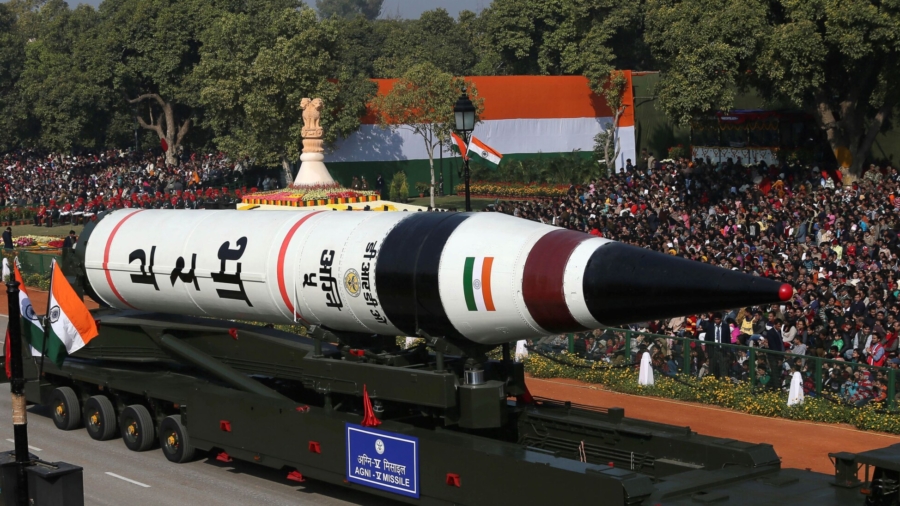India on Wednesday successfully test-fired surface-to-surface ballistic missile Agni-5, capable of striking targets at ranges of up to 3,100 miles (5,000 kilometers) with a “very high degree of accuracy,” officials said.
The missile, which uses a three-stage solid-fuelled engine, was launched at approximately 7:50 p.m. local time from APJ Abdul Kalam Island, Odisha, which is roughly 93 miles (150 kilometers) east of the state capital Bhubaneswar.
“The successful test of Agni-5 is in line with India’s stated policy to have ‘credible minimum deterrence’ that underpins the commitment to ‘No First Use,'” India’s Ministry of Defence said in a statement.
The test-firing of the missile comes amid a stalemate in talks regarding lingering border tensions over the western section of the China–India border. Beijing has also amped up its powerful missile arsenal, in turn prompting New Delhi to improve its medium- and long-range nuclear and missile weapons systems in recent years and boost the country’s defense capabilities.
Earlier this month, the 13th round of talks between both countries focusing on the resolution of the remaining issues along the Line of Actual Control (LAC) in Eastern Ladakh broke down yet again.
It was hoped the corps commander-level talks held at the Chushul-Moldo border meeting point on Oct. 10 would bring about a long-term solution to the recent clashes.
Instead, the dialogue—which lasted nearly 8 1/2 hours—ended in a stalemate, with the Indian army issuing a statement highlighting that the situation along the shared border had been caused by “unilateral attempts” of the Chinese side to alter the status quo in violation of bilateral agreements.
“During the meeting, the Indian side made constructive suggestions for resolving the remaining areas but the Chinese side was not agreeable and also could not provide any forward-looking proposals,” a statement from the Indian army said. “The meeting thus did not result in resolution of the remaining areas.”
“It was therefore necessary that the Chinese side take appropriate steps in the remaining areas so as to restore peace and tranquility along the LAC in the Western sector,” it continued.
“The two sides have agreed to maintain communications and also to maintain stability on the ground. It is our expectation that the Chinese side will take into account the overall perspective of bilateral relations and will work towards early resolution of the remaining issues while fully abiding by bilateral agreements and protocols.”
Meanwhile, China stated that talks had failed, with a statement from Senior Col. Long Shaohua, the spokesperson for the Western Theater Command of the Chinese People’s Liberation Army (PLA), saying, “India insists on unreasonable and unrealistic demands, adding difficulties to the negotiations.”
“China hopes the Indian side will not misjudge the situation, cherish the hard-won situation in the China–India border areas, show sincerity and take actions, and work with China to jointly safeguard peace and stability in the border areas,” Long added.
Talks between both countries two months prior had resulted in both sides agreeing to the disengagement of troops from Gogra (Patrol Point-17A) where troops had been in a face-off situation since May 2020. The standoffs in Depsang and Hot Springs continued.
India has insisted that the resolution of outstanding issues in all friction points along the LAC is essential to restoring peace and improving ties between China and India.
Despite this, China is deploying record numbers of troops to the India–China border, and frequently changing the commander of the Western Battle Zone that encompasses the border, according to Indian army Chief Gen. Manoj Mukund Naravane.
The Agni-5 is believed to be able to strike nearly all of China, the Associated Press reports.
India is already able to strike anywhere inside neighboring Pakistan, with whom it has fought three wars since gaining independence from British colonialists in 1947.
The Associated Press contributed to this report.
From The Epoch Times


